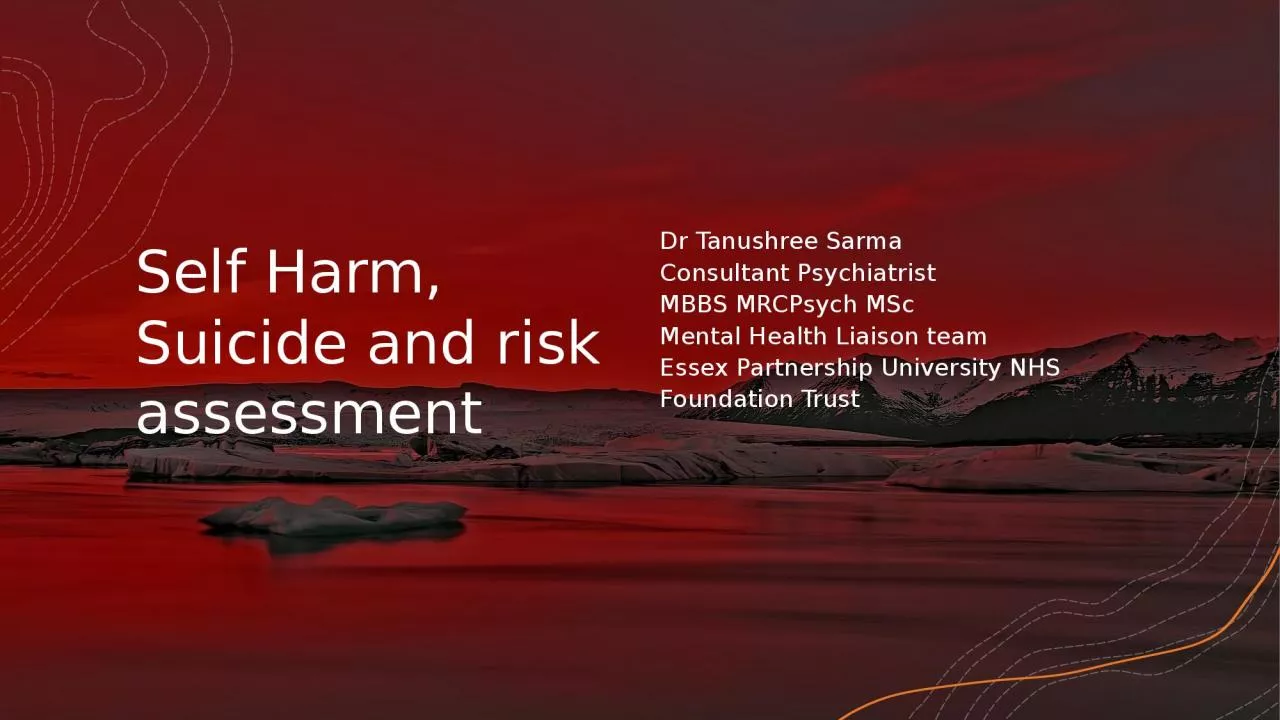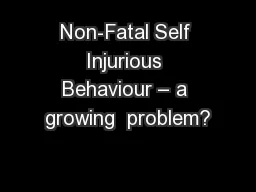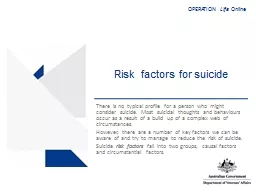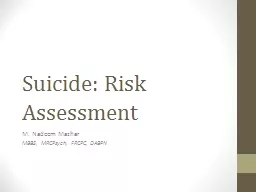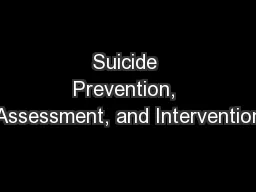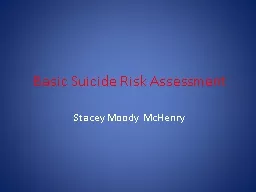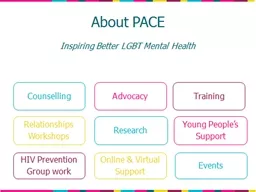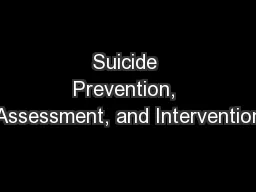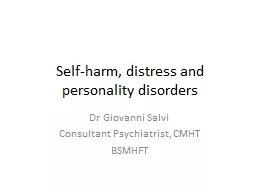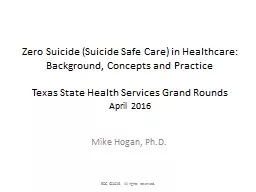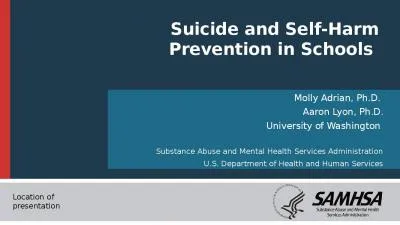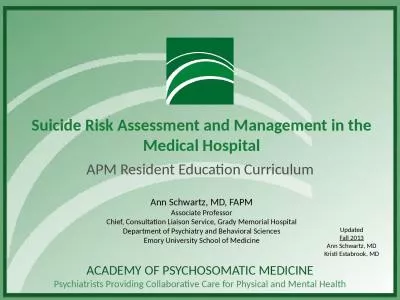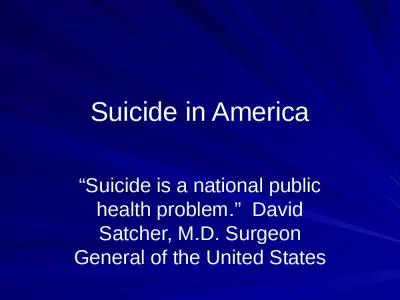PPT-Self Harm, Suicide and risk assessment
Author : KissableLips | Published Date : 2022-08-04
Dr Tanushree Sarma Consultant Psychiatrist MBBS MRCPsych MSc Mental Health Liaison team Essex Partnership University NHS Foundation Trust Statistics Acute Psychiatric
Presentation Embed Code
Download Presentation
Download Presentation The PPT/PDF document "Self Harm, Suicide and risk assessment" is the property of its rightful owner. Permission is granted to download and print the materials on this website for personal, non-commercial use only, and to display it on your personal computer provided you do not modify the materials and that you retain all copyright notices contained in the materials. By downloading content from our website, you accept the terms of this agreement.
Self Harm, Suicide and risk assessment: Transcript
Download Rules Of Document
"Self Harm, Suicide and risk assessment"The content belongs to its owner. You may download and print it for personal use, without modification, and keep all copyright notices. By downloading, you agree to these terms.
Related Documents

